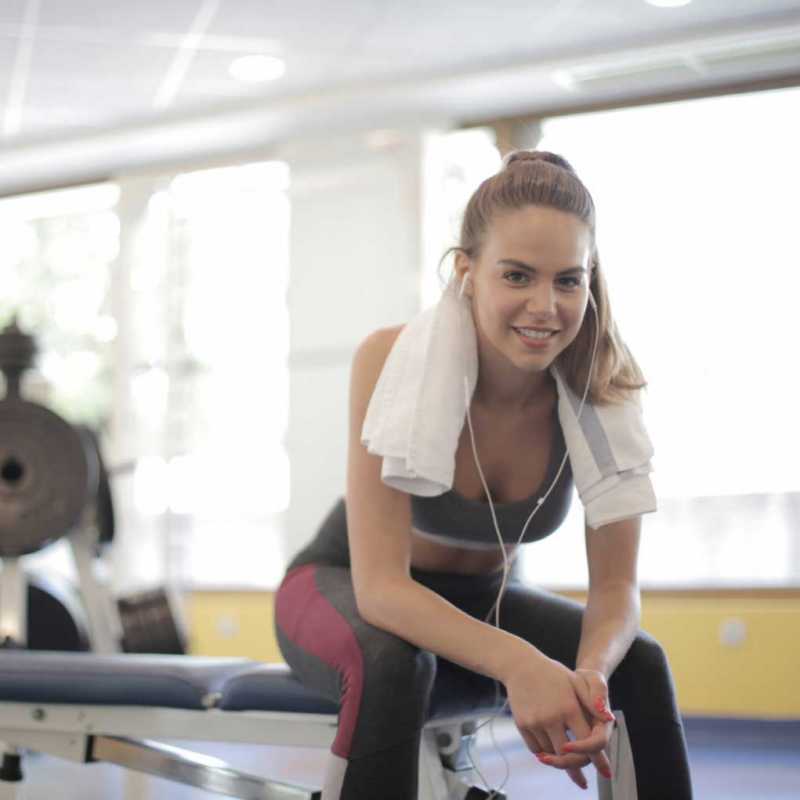The Science Behind HIIT
Understanding the Physiology and Benefits.
Physiological Mechanisms of HIIT
High-Intensity Interval Training (HIIT) involves short bursts of intense exercise followed by periods of rest or low-intensity exercise. This training method places significant stress on the body, leading to numerous physiological adaptations that enhance fitness and health.
Anaerobic and Aerobic Systems
During high-intensity intervals, the body primarily relies on anaerobic energy systems, which produce energy without oxygen. This includes the phosphagen system (ATP-PC) for immediate energy and glycolysis for short-term energy production. The brief rest periods allow partial recovery and engagement of aerobic metabolism, which uses oxygen to produce energy more efficiently.
In simple terms, HIIT uses both anaerobic and aerobic systems, pushing your body to adapt by improving its energy production efficiency.
Mitochondrial Biogenesis
HIIT stimulates mitochondrial biogenesis, the process by which new mitochondria are formed in cells. Mitochondria are the powerhouses of cells, responsible for energy production. An increase in mitochondria enhances the body’s ability to produce energy, improving endurance and overall fitness.
Increased VO2 Max
VO2 max, a measure of the maximum amount of oxygen the body can utilize during exercise, is a key indicator of cardiovascular fitness. HIIT has been shown to significantly improve VO2 max, more so than traditional moderate-intensity continuous training. This improvement results from enhanced cardiac output and increased efficiency of oxygen utilization in muscles.
In practical terms, a higher VO2 max means you can work out harder, longer.
Metabolic Benefits
HIIT provides significant metabolic benefits, contributing to improved body composition and overall health.
Enhanced Fat Oxidation
HIIT promotes greater fat oxidation, allowing the body to burn fat more efficiently during and after exercise. This process is facilitated by increased enzyme activity involved in fat metabolism and higher levels of catecholamines, which stimulate fat breakdown.
Elevated EPOC
Excess post-exercise oxygen consumption (EPOC), also known as the afterburn effect, refers to the increased rate of oxygen intake following strenuous activity. HIIT significantly elevates EPOC, leading to additional calorie burning even after the workout is completed. This effect contributes to improved metabolic rate and fat loss.
Insulin Sensitivity
HIIT improves insulin sensitivity, which enhances the body’s ability to use glucose for energy and reduces the risk of type 2 diabetes. Improved insulin sensitivity results from increased glucose transporter proteins (GLUT4) and enhanced muscle glucose uptake.
Research Findings on HIIT
Numerous studies have explored the effects of HIIT on various aspects of health and fitness. Here are some key findings:
Body Composition
A study published in the Journal of Obesity found that 12 weeks of HIIT significantly reduced body fat and increased lean body mass, even without dietary changes. Participants experienced significant fat loss and muscle gain, highlighting HIIT’s effectiveness for body composition improvement.
Cardiovascular Health
Research published in the Journal of Sports Science & Medicine demonstrated that HIIT can improve markers of cardiovascular health more effectively than traditional moderate-intensity continuous training. Participants showed improvements in VO2 max, lowered blood pressure, and reduced bad cholesterol levels.
Mental Health Benefits
HIIT has also been associated with improved mental health outcomes. Studies indicate that HIIT can reduce symptoms of anxiety and depression, enhance mood, and improve overall psychological well-being. The intense physical exertion and endorphin release during HIIT contribute to these mental health benefits.
Health Benefits of HIIT
Beyond fitness improvements, HIIT offers a range of health benefits that contribute to overall well-being.
Heart Health
HIIT improves cardiovascular health by increasing cardiac output and enhancing arterial function. Regular HIIT sessions can lead to lower resting heart rates, reduced blood pressure, and improved cholesterol profiles.
Muscle Preservation and Growth
While HIIT is primarily a cardiovascular workout, it also promotes muscle preservation and growth, especially when combined with resistance exercises. The high-intensity nature of HIIT stimulates muscle protein synthesis, aiding in muscle maintenance and development.
Time Efficiency
One of the most attractive benefits of HIIT is its time efficiency. Short, intense workouts can yield significant health and fitness benefits, making HIIT an ideal choice for individuals with busy schedules. Research shows that even sessions as short as 15-20 minutes can produce substantial results.
Additional Scientific Insights
Impact on Mitochondrial Density
Regular HIIT has been shown to increase mitochondrial density in muscle cells. Mitochondria are crucial for energy production, and having more of them means improved energy efficiency and endurance. This adaptation allows athletes to sustain high-intensity efforts for longer periods.
Hormonal Responses
HIIT triggers beneficial hormonal responses, including increased production of growth hormone and testosterone, both of which are crucial for muscle growth, fat loss, and overall metabolic health. The intensity of HIIT workouts stimulates the endocrine system, leading to these hormonal benefits.
Improved Blood Flow and Oxygen Utilization
Studies have shown that HIIT enhances capillary density, which improves blood flow to muscles and other tissues. Improved capillary networks mean better delivery of oxygen and nutrients, and more efficient removal of waste products, contributing to enhanced performance and quicker recovery.
Practical Applications of HIIT
Customization for Different Fitness Levels
HIIT can be tailored to suit various fitness levels, from beginners to advanced athletes. Beginners might start with longer rest periods and shorter work intervals, while advanced individuals can engage in more intense protocols like Tabata.
Diverse Exercise Selection
HIIT workouts can include a variety of exercises, from bodyweight movements like burpees and jumping jacks to equipment-based exercises using kettlebells, battle ropes, and even cardio machines like treadmills and stationary bikes. This versatility makes HIIT adaptable to different preferences and training environments.
Integration with Other Training Modalities
HIIT can be effectively integrated with other training modalities, such as strength training and flexibility exercises, to create a well-rounded fitness program. For example, combining HIIT with resistance training can maximize both cardiovascular and muscular benefits.
Experience the Power of HIIT at Weight Crafters
At Weight Crafters, we incorporate high intensity interval training extensively in our fitness retreat and weight loss camp programs to help you achieve your fitness goals efficiently.
Join us at Weight Crafters to experience the transformative power of HIIT. Our expert team is here to guide you every step of the way, providing you with the tools and knowledge to succeed.
Let's get started on your fitness journey together!








